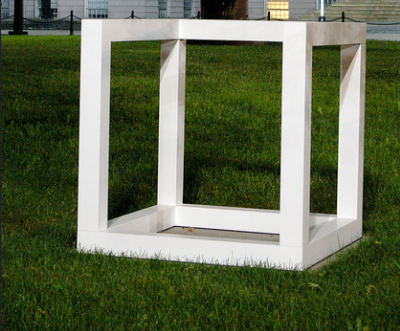Table of Contents |
The art that you’ll be looking at today dates from between 1965 and 2009.

This artwork focuses geographically on three locations: New York City, where Sol LeWitt and Joseph Kosuth both have ties; Santa Monica, California, where John Baldessari lives and works; and Rio de Janeiro, Brazil, where Cildo Meireles lives and works.
The development of conceptual art has a long history. Although Sol LeWitt is considered by many to be the founder of conceptualism, it can actually be traced back to artists such as Dada artist Marcel Duchamp.
Despite this length of time, conceptual art is a form of art that still remains popular today. As you can see by the timeline above, the art you’re looking at in this lesson covers more than 40 years. Perhaps one of the reasons for its longevity is that its nature has an extremely broad appeal. Ideas are always changing, and people are always interested in sharing and learning unique points of view, which is a concept that serves as the foundation of this artistic movement.
However, conceptual art can take on many forms. One way to think of conceptualism is minimalism, taken one step further. Not only are the idea and actual work of art dependent on each other, as they often are in minimalism, but the pendulum has completely swung the other way. The idea behind conceptual art is paramount in this context; the artwork simply conveys the message.
Another way to understand conceptual art is that it involves art that is designed to make you think about what you are experiencing with the work of art. This often involves immersion or interactivity with the work of art in an installation.
As mentioned before, conceptual art can take on many forms, as you’ll see by the range of examples to follow. This first one shows a set of minimalistic open cubes by Sol LeWitt.

1966
Painted wood
This next example, an installation or installment piece by Brazilian artist Cildo Meireles, is larger than the photo suggests. The viewer is immersed into this many-roomed, multi-sensory exhibit in which each room is painted an entirely different color with a monitor in each room showing a complementary hue. Essentially, it’s an exploration of how colors have an effect on one another.

2009
Installation
One aspect of conceptualism is that it involves linguistic concerns, such as the relationship between a word and the object, or idea, to which the word refers. One of the best examples of this is the artwork “One and Three Chairs,” by Joseph Kosuth. It comprises the physical, three-dimensional chair; a picture of that chair; and a written definition of the word chair. It’s one idea of chair, but three different manifestations of that idea.

1965
Much of what is appealing in conceptual art is the wit evoked in many of the works of art. John Baldessari’s painting, shown below, is a classic example of this, in how it questions and parodies the traditional experience of a work of art. It is essentially a painted essay about the experience of exhibiting a work of art and how one gains perspective by comparing their work to other works of art that surround it.

1967-1968
Acrylic on canvas
Source: This work is adapted from Sophia author Ian McConnell.